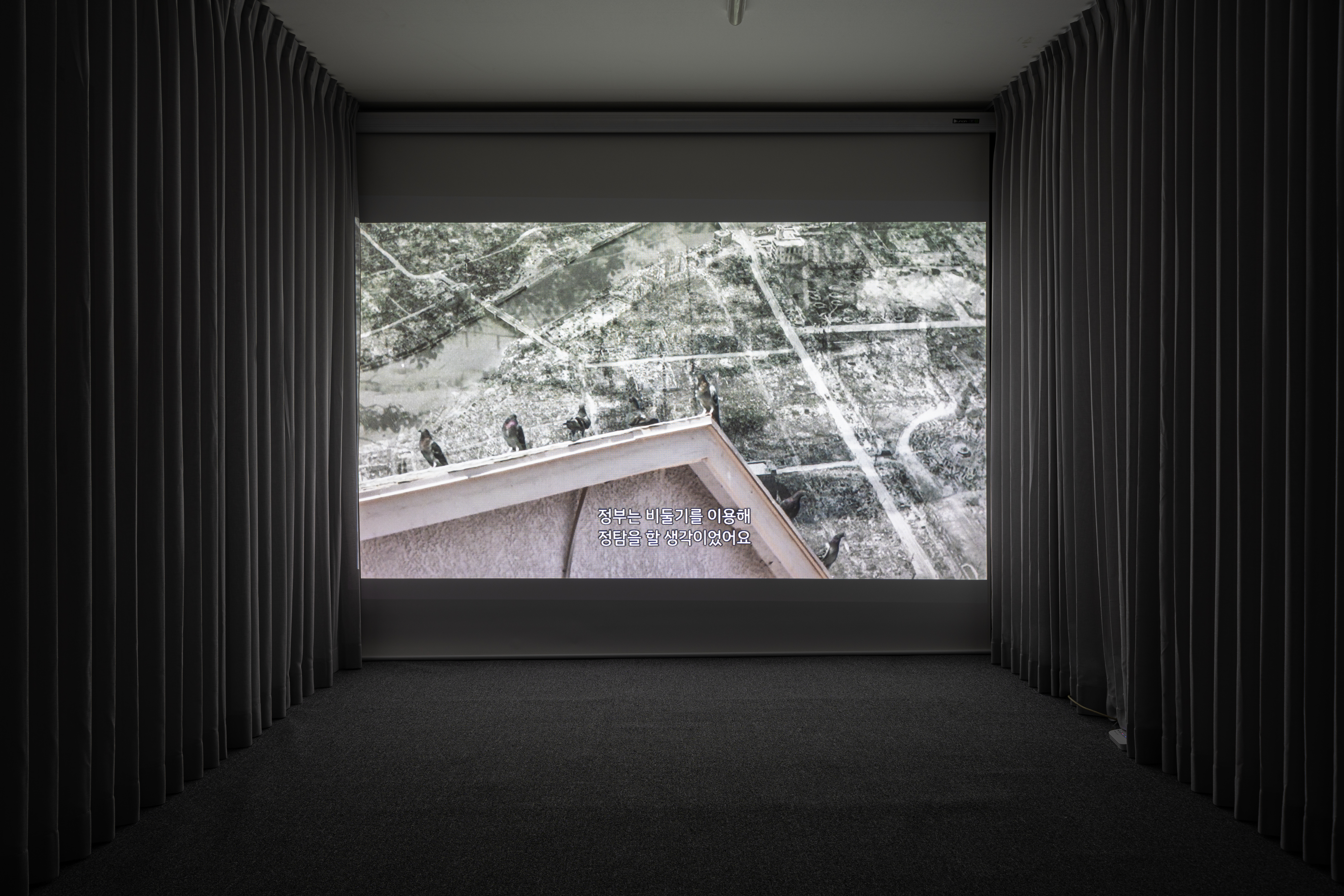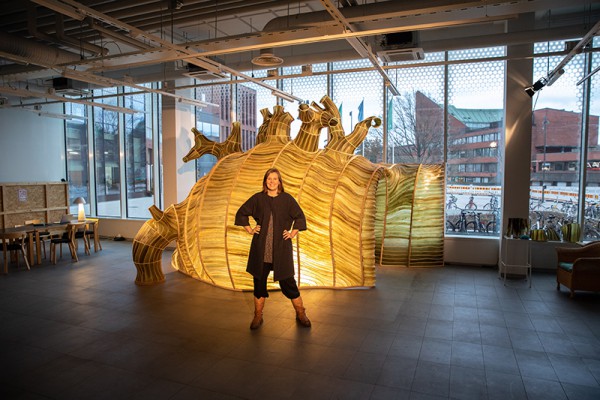Birds
2020, Single channel HDV video, color, stereo sound, 28min. 27sec.

Description
How can we enable better public engagement and open, transparent debate about nuclear power and whether it is worth the risk?
Radioactive pigeons, two pairs of twins and a massacre bring chaos to a sleepy seaside village. In this environment everything is entangled —including birds, humans and plutonium — and nothing is spared.
With an aesthetic approach that emphasizes the act of creation and construction over a passive recording and reconstruction of the world, Birds humanizes the connections between the nuclear and the everyday at a time of great environmental threat and nuclear uncertainty, reminding us that we live in thepost-Cold War nuclear age.
Today’s world is marked by increasing anxieties around nuclear energy and risks, ongoing war, extractivism and violence. And after the Fukushima disaster, the war in Ukraine and political tensions and conflicts, we know that not only is the nuclear age still here, but unless we take action, the risk of a nuclear holocaust might be even greater.
Birds is inspired by real events that took place between 1998-2010 in the area around Sellafield, the large nuclear reprocessing site in Cumbria, UK. Actors present different accounts as they were recorded in the media at the time. The imagery builds around the seaside and nuclear plant and accumulates and dissipates in a volatile environment where all forms of life are entangled. The overarching motif is the environment that the nuclear plant seeps into — land, sea and air — metamorphosing and mutating because of human actions and now, beyond human control. The birds are the constant presence, and unstoppable.
The actors’ voices are woven through a soundscape that gives a voice to the birds and to the environment. The soundscape was created by Meg Travers on a unique instrument she built, a 21st century version of the Trautonium. The original Trautonium, a 1920s German synthesizer, was used to create the non-musical soundtrack for Alfred Hitchcock’s 1963 film The Birds. Meg Travers is one of only two people in the world who compose for and play the Trautonium.
How can we enable better public engagement and open, transparent debate about nuclear power and whether it is worth the risk?
Radioactive pigeons, two pairs of twins and a massacre bring chaos to a sleepy seaside village. In this environment everything is entangled —including birds, humans and plutonium — and nothing is spared.
With an aesthetic approach that emphasises the act of creation and construction over a passive recording and reconstruction of the world, BIRDS humanises the connections between the nuclear and the everyday at a time of great environmental threat and nuclear uncertainty, reminding us that we live in the post-Cold War nuclear age.
Today’s world is marked by increasing anxieties around nuclear energy and risks, ongoing war, extractivism and violence. And after the Fukushima disaster, the war in Ukraine and political tensions and conflicts, we know that not only is the nuclear age still here, but unless we take action, the risk of a nuclear holocaust might be even greater.
Birds is inspired by real events that took place between 1998-2010 in the area around Sellafield, the large nuclear reprocessing site in Cumbria, UK. Actors present different accounts as they were recorded in the media at the time. The imagery builds around the seaside and nuclear plant and accumulates and dissipates in a volatile environment where all forms of life are entangled. The over-arching motif is the environment that the nuclear plant seeps into — land, sea and air — metamorphosing and mutating because of human actions and now, beyond human control. The birds are the constant presence, and unstoppable.
The actors’ voices are woven through a soundscape that gives a voice to the birds and to the environment. The soundscape was created by Meg Travers on a unique instrument she built, a 21st century version of the Trautonium. The original Trautonium, a 1920s German synthesizer, was used to create the non-musical soundtrack for Alfred Hitchcock’s 1963 film The Birds. Meg Travers is one of only two people in the world who compose for and play the Trautonium.



